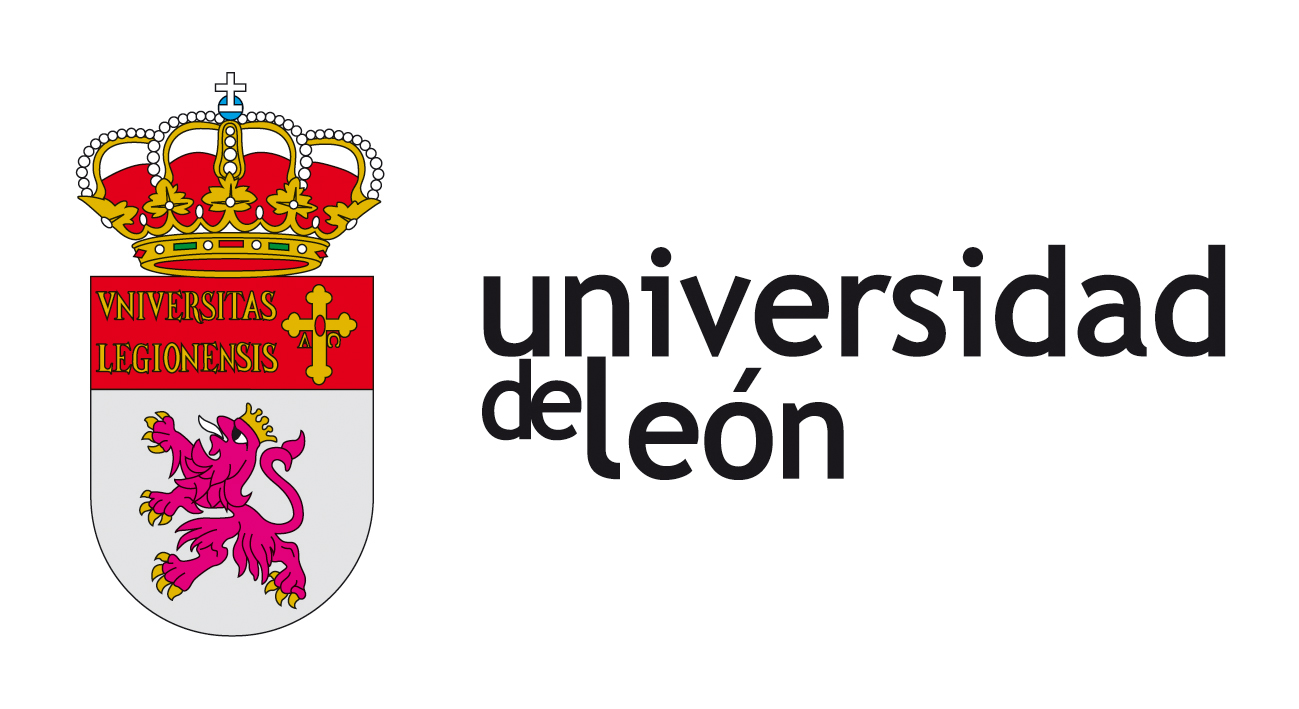Créditos
Seminario Interdisciplinar de Estudios de las Mujeres de la Universidad de León
ISSN digital: 2444-0221
DOI: 10.18002/cg
El proceso editorial es un conjunto de prácticas y procedimientos que se inicia una vez que el manuscrito es enviado a la revista y culmina con su publicación. Este proceso consta de distintas etapas que se encuentran encadenadas de manera correlativa, por lo que demoras en cualquiera de ellas pueden ocasionar retrasos en las sucesivas instancias. Por este motivo, los autores/as deberán cumplir estrictamente con los plazos solicitados por el Comité Editorial. La entrega de cualquier tipo de documentación fuera de término podrá ser motivo de rechazo de un manuscrito por parte de los editores. De forma simplificada, las distintas etapas del proceso editorial consisten en:
1) Envío de manuscritos por parte de los autores/as,
2) Evaluación en primera instancia: revisión formal y editorial,
3) Evaluación externa doble ciega: arbitraje externo de los contenidos,
4) Aceptación o rechazo del manuscrito,
5) Edición o producción editorial y
6) Publicación.
Tiempos del proceso editorial:
- Primera decisión editorial: 30 días desde el cierre de la convocatoria.
- Proceso de evaluación por pares externos: 30 días.
- Entrega de versiones con las modificaciones sugeridas en la revisión: 7 días.
- Comunicación de aceptación/rechazo definitivo: 15 días.
- Edición y pre-print: 30 días
- Publicación revista: mes de Junio de cada año.
A continuación, se describen las características generales de cada una de estas instancias.
El envío de los manuscritos se llevará a cabo de forma electrónica a través de Plataforma de la Revista Cuestiones de Género. Para ello es necesario que las autoras y autores se registren mediante usuario y contraseña. La revista no aceptará manuscritos que no se ajusten a las pautas de formato y estilo estipuladas en las Directrices para autores/as vigentes, sean entregados fuera del plazo establecido en las Convocatorias específicas o sean enviados mediante correo.
Como la Revista Cuestiones de Género es de carácter anual, estará recibiendo envíos durante todo el año. La fecha de finalización de cada convocatoria finaliza el 28 de febrero de cada año, salvo que, excepcionalmente, se aplace por 15 días. La Revista acusará recibo de los originales en un plazo máximo de 30 (treinta) días desde la fecha de cierre de la convocatoria.
Una vez que los artículos hayan sido recibidos, serán revisados por la Coordinación y el Consejo de Redacción a fin de determinar la pertinencia temática y el cumplimento de las normas editoriales establecidas por la revista. El incumplimiento de alguno de los parámetros mencionados, así como la falta de cualquier tipo de documentación o su entrega fuera de término, podrá ser motivo de rechazo de un manuscrito en primera instancia por parte de los editores.
Se recuerda que para su admisión en primera instancia los manuscritos deben cumplir una serie de requisitos mínimos que se detallan a continuación.
Son requisitos imprescindibles para superar la primera fase de revisión:
- Que los artículos sean inéditos, fruto de trabajos de investigación, comunicación científica o creación originales.
- Que la estructura del artículo contemple en el corpus del texto los siguientes apartados debidamente numerados: introducción, objetivos, metodología, resultados y conclusión.
- Que el resumen contemple los siguientes aspectos: objetivos, metodología, resultados y conclusión.
- Que las citas en el texto y la bibliografía cumplan estrictamente con las normas de la revista.
- Que supere el análisis de Turnitin (los resultados de chequeo del artículo por el programa no deben superar una similitud superior a 20%).
Si el manuscrito no cumpliera con cualquiera de los requisitos citados anteriormente sería rechazado en primera instancia.
En el caso de que el Consejo de Redacción considere que tiene pequeñas carencias y que los cambios necesarios son menores, darán la oportunidad a la autoría para que los solvente y vuelva a enviar el manuscrito ajustado en un plazo máximo de 2 (dos) días.
El artículo que cumpla con todos los requisitos pasará a la siguiente fase. En cualquiera de los casos anteriores la Revista enviaría a la autoría una comunicación acerca de las decisiones editoriales.
A fin de garantizar la calidad de los contenidos, los manuscritos que pertenezcan a las secciones “Monográfico”, “Tribuna Abierta” y “A Propósito de” que hayan superado la revisión formal realizada por los editores serán sometidos a un doble arbitraje ciego de especialistas externos, siguiendo los lineamientos del Sistema de Revisión por “Pares” y “Doble Ciegos” para la evaluación de trabajos científicos. Cabe aclarar que el desarrollo de esta etapa se encuentra necesariamente condicionado por los tiempos de respuesta de las múltiples personas que participan en ella.
Los evaluadores/as serán seleccionados previamente por los editores, de acuerdo con su nivel científico y afinidad temática con el manuscrito a evaluar. La identidad de los evaluadores/as no podrá ser revelada a los autores/as, garantizando el más absoluto anonimato de los informes y dictámenes de evaluación.
Atendiendo a las recomendaciones realizadas por el Committee of Publication Ethics (COPE), las evaluaciones deberán realizarse sobre la base de los siguientes criterios: relevancia científica, originalidad, claridad y pertinencia. De esta manera, los evaluadores/as podrán sugerir las modificaciones que consideren significativas y pertinentes, relacionadas con el contenido, la estructura, los objetivos, la metodología, los resultados, las interpretaciones y/o las referencias bibliográficas. Las mismas deberán:
a) Estar fundamentadas sobre la base de criterios definidos en el formulario de evaluación correspondiente;
b) Ser objetivas y respetuosas del disenso y
c) Promover la construcción e intercambio crítico para orientar y mejorar las contribuciones.
El proceso de evaluación constará de un máximo de hasta 2 (dos) rondas de arbitraje. Durante la primera ronda los manuscritos serán revisados por 2 (dos) evaluadores/as que tendrán un plazo de 30 (treinta) días para realizar la evaluación y enviar su informe.
En esta instancia, el dictamen de cada uno de los evaluadores/as podrá obtener alguno de los siguientes resultados:
a) Aceptar el envío. El trabajo se debe publicar tal cual se encuentra sin necesidad de mejoras.
b) Publicable con modificaciones. El trabajo se puede publicar después de realizar una serie de cambios que ayudarán a mejorar su contenido.
c) Reenviar para revisión. El trabajo deberá ser modificado con los cambios propuestos, para después ser nuevamente revisado por usted
d) No publicable. El trabajo es deficiente en contenido y, por lo tanto, no cumple con los requisitos para su publicación.
Para que el artículo siga en el proceso de evaluación las dos recomendaciones por parte de las evaluaciones ciegas deben ser positivas (Aceptar este envío/Publicable con modificaciones). En caso de recibir otras recomendaciones (Reenviar para revisión/Reenviar a otra publicación/No publicable), el artículo será denegado.
En caso de recibir las dos valuaciones favorables, los trabajos serán remitidos nuevamente a los autores/as para que efectúen todas las correcciones o modificaciones solicitadas en un plazo de 7 (siete) días.
Una vez realizadas las modificaciones pertinentes, los autores/as deberán remitir el manuscrito corregido junto con una Nota de Descargo en la que se detallen todos y cada uno de los cambios realizados (tanto menores como mayores). En el caso de que los autores/as estén en desacuerdo con algunas de las observaciones realizadas por los evaluadores/as deberán justificar su posición en dicho documento. La Nota de Descargo se entregará a los editores en archivo aparte y deberá estar firmada por todos y cada uno de los autores/as. El archivo del manuscrito corregido debe devolverse con el control de cambios, para que el Comité Editorial y los revisores puedan corroborar las modificaciones menores y mayores realizadas.
Finalmente, en caso de que alguno de los evaluadores/as haya solicitado cambios mayores, el manuscrito será sometido a una segunda ronda de arbitraje, a fin de verificar si los comentarios realizados en la primera instancia fueron o no considerados. En este caso, los dictámenes finales podrán ser solamente de 2 (dos) tipos: Aceptado o Rechazado.
El resultado final de aceptación o rechazo de un manuscrito será decisión última del Comité Editorial, siendo esta una resolución de carácter inapelable. La decisión será comunicada oportunamente a los autores/as según corresponda en un plazo de 15 (quince) días tras recibir la versión definitiva de las autoras/es aprobadas por las revisoras e revisores. La aceptación estará sujeta a los siguientes criterios:
a) La obtención de las dos evaluaciones favorables;
b) La consideración de todas las correcciones y/o sugerencias realizadas por evaluadores/as y editores;
c) El cumplimiento de las normas editoriales y
d) El cumplimiento de los plazos establecidos por la revista.
Una vez que el Comité Editorial decida aceptar un manuscrito, el mismo pasará a la etapa de edición o producción editorial, ya no podrá ser retirado por los autores/as y no podrán realizarse más cambios en la composición autoral.
Durante esta etapa, el Comité Editorial se ocupará de las siguientes tareas:
a) Corrección de estilo;
b) Maquetación;
c) Corrección de pruebas de galera;
d) Corrección de metadatos de la versión final.
El equipo realizará este proceso en un plazo de 30 (treinta) días. A continuación, se describe cada uno de los procesos.
Se revisará la existencia de errores ortográficos, gramaticales, sintácticos y semánticos, así como la presencia de muletillas y el uso adecuado del vocabulario específico del campo disciplinar.
Se realizará la diagramación formal de todos los contenidos que integrarán el número en curso. Para que una publicación editorial resulte atractiva es importante mantener un equilibrio entre el contenido y la presentación, otorgando así homogeneidad estética e informacional. En consecuencia, esta instancia involucra la organización, distribución y presentación de cada uno de los elementos textuales y gráficos que componen cada trabajo.
Luego de la maquetación, el Comité Editorial generará las pruebas de galera para cada uno de los manuscritos. Se trata de las versiones preliminares de los trabajos a publicar, confeccionadas con el fin de detectar errores tipográficos y/o de diagramación antes de su publicación definitiva. Estas serán puestas a disposición de las autoras/es con el objetivo de que puedan revisar los manuscritos y enviar sus observaciones dentro de los plazos estipulados por los editores. En esta instancia será posible corregir únicamente errores formales y tipográficos, pero no se admitirá la reescritura del texto ni ningún otro cambio en el contenido en los manuscritos (incluyendo tablas y figuras).
Los metadatos comprenden los datos que describen otros datos. Estos remiten a la descripción de las propiedades de cada manuscrito, facilitan la interoperabilidad a través de la aplicación de estándares y protocolos compartidos con otros sistemas y ofrecen contextos de significado más amplios en los motores de búsqueda, facilitando la recuperación eficaz de información. De esta manera, una vez superada la corrección de las pruebas de galera, el Comité Editorial procederá a corregir y unificar todos los metadatos asociados a la versión final de cada trabajo.
La publicación de los número de la Revista Cuestiones de Género es anual y se realiza en el mes de junio, de forma ininterrumpidamente, desde su creación, en el año de 2005.
Créditos
Seminario Interdisciplinar de Estudios de las Mujeres de la Universidad de León
ISSN digital: 2444-0221
DOI: 10.18002/cg
Contacto:
Departamento de Psicología, Sociología y Filosofía. Facultad de Educación. 24071 - León - España. Teléfono: 987291860. E-mail: cuestionesdegenero@unileon.es
Directora de la Revista:
Ana Isabel Blanco García
Móvil: 625570546. Email: aiblag@unileon.es
e-I.S.S.N. 2444-0221 - Depósito Legal: LE-1039-2005.
Diseño de portada: INDOS (Images copyright ©INDOS, S. L. and its licensors. All rights reserved).
Diseño del logotipo del Seminario Interdisciplinar de Estudios de las Mujeres de la ULE: Teresa Serrano León.
Servicio de Publicaciones. Universidad de León.
 Edificio de Servicios Campus de Vegazana s/n E24071 – LEÓN (España)
Edificio de Servicios Campus de Vegazana s/n E24071 – LEÓN (España)
 987 29 11 66
987 29 11 66
 987 29 19 36
987 29 19 36
 publicaciones@unileon.es
publicaciones@unileon.es


